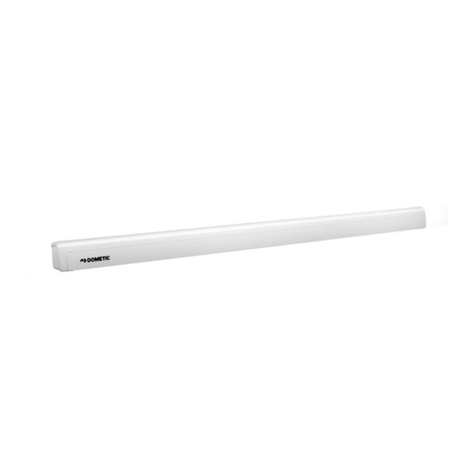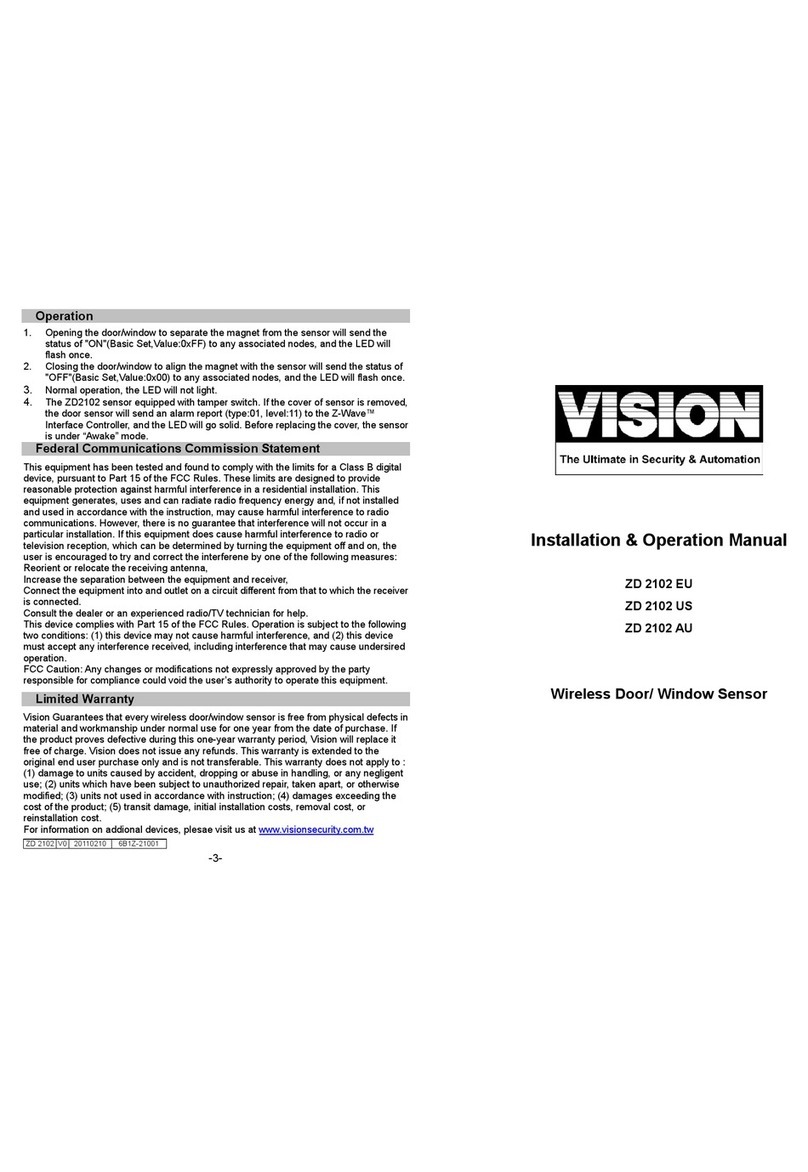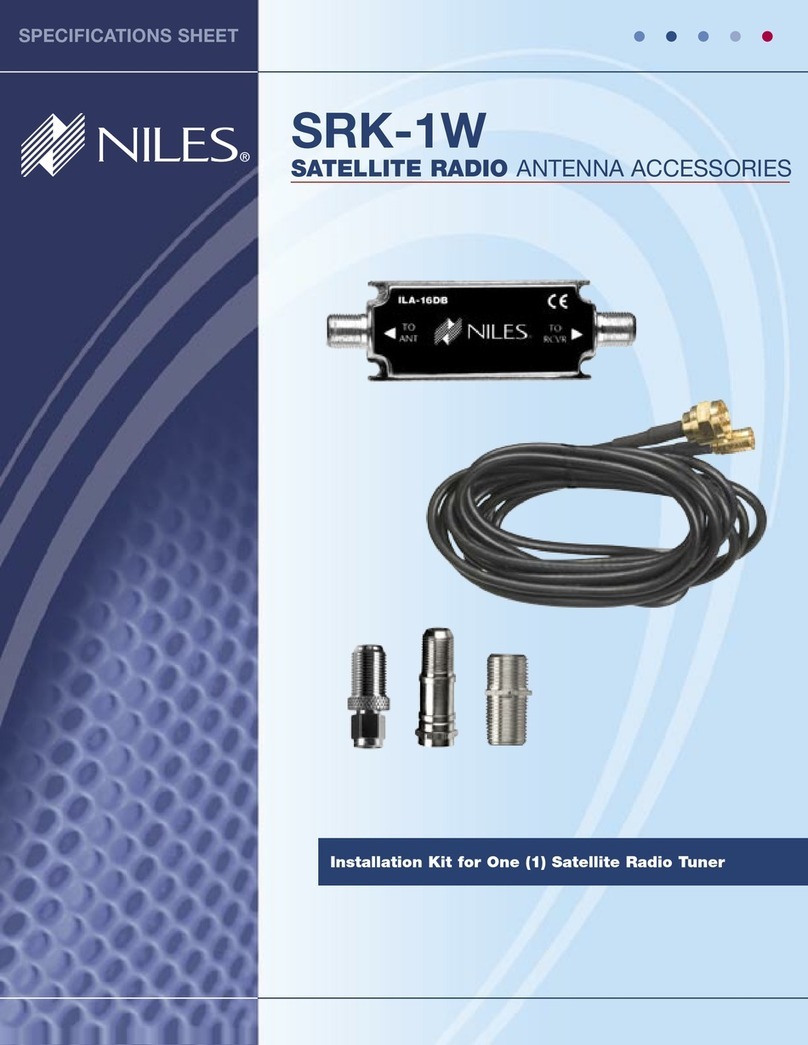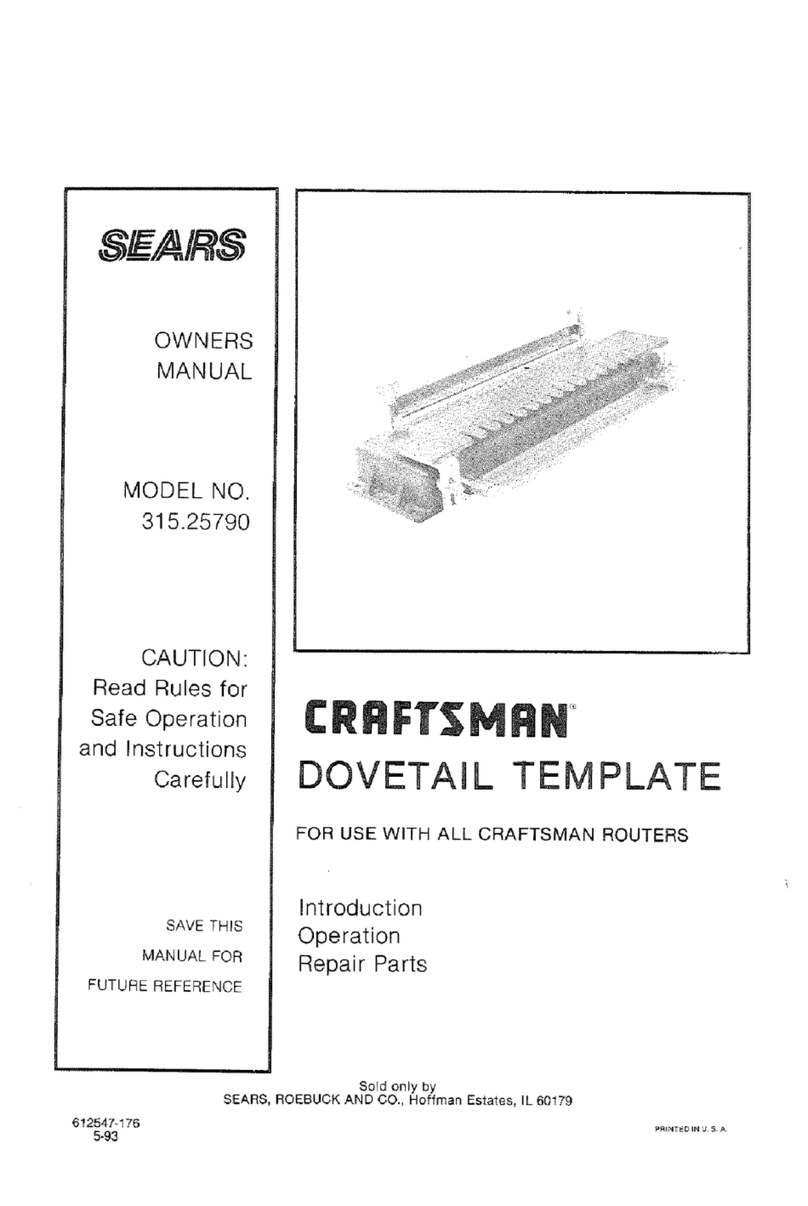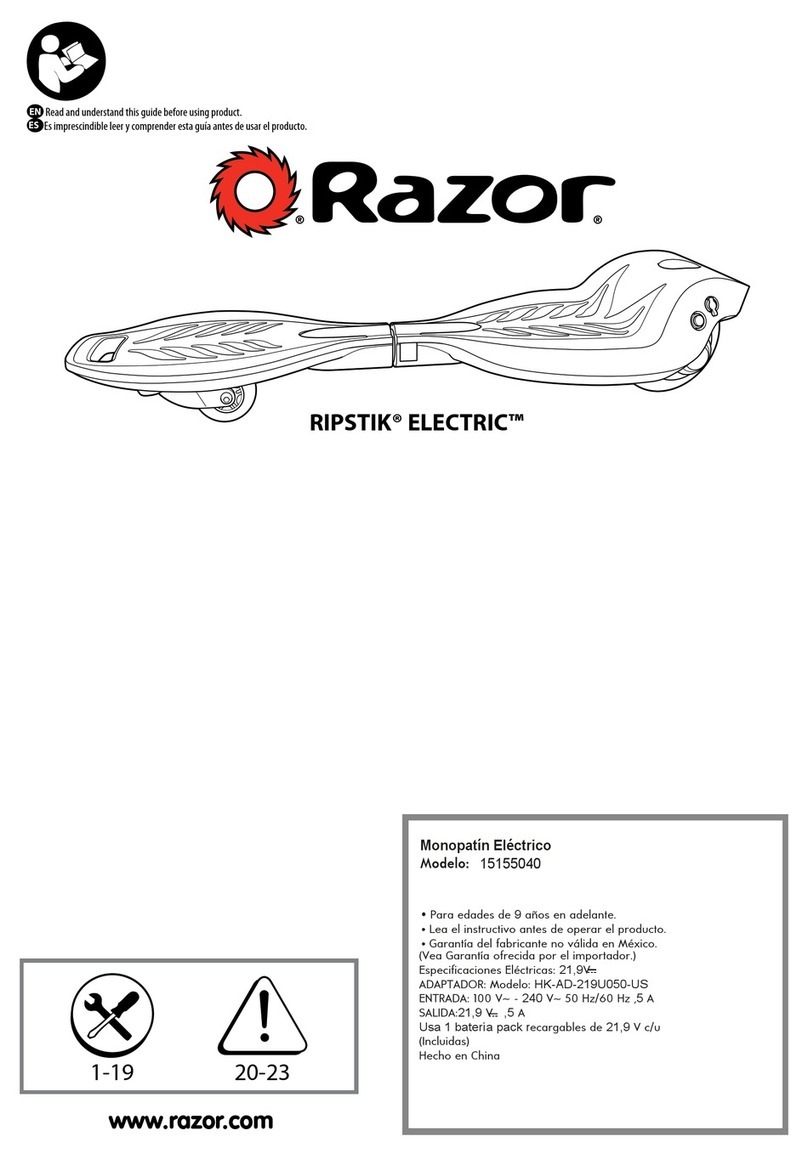Clore Automotive Light-N-Carry POWERLIGHT RESCUE LNC7480 User manual

Operator’s Manual
WARNING
Read these instructions completely before using the J900 and save them for future
reference. Before using the J900 to jump start a car, truck, boat or to power any
equipment, read these instructions and the instruction manual/safety information
provided by the car, truck, boat or equipment manufacturer. Following all manufacturers’
instructions and safety procedures will reduce the risk of accident.
Working around lead-acid batteries may be dangerous. Lead-acid batteries release
explosive gases during normal operation, charging and jump starting. Carefully read and
follow these instructions for safe use. Always follow the specific instructions in this
manual and on the J900 each time you jump start using the J900.
All lead-acid batteries (car, truck and boat) produce hydrogen gas which may violently
explode in the presence of fire or sparks. Do not smoke, use matches or a cigarette
lighter while near batteries. Do not handle the battery while wearing vinyl clothing
because static electricity sparks are generated when vinyl clothing is rubbed. Review all
cautionary material on the J900 and in the engine compartment.
Always wear eye protection, appropriate protective clothing and other safety equipment
when working near lead-acid batteries. Do not touch eyes while working on or around
lead-acid batteries.
Always store clamps in their holsters, away from each other or common conductors.
Improper storage of clamps may cause the clamps to come in contact with each other,
or a common conductor, causing the battery to short circuit and generate high enough
heat to ignite most materials.
Use extreme care while working within the engine compartment, because moving parts
may cause severe injury. Read and follow all safety instructions published in the vehicle's
Owner's Manual.
While the battery in the J900 is a sealed unit with no free liquid acid, batteries being jump
started with the J900 unit likely contain liquid acids which are hazardous if spilled.
Failure to follow instructions may
cause damage or explosion,
always shield eyes. Read entire
instruction manual before use.
WARNING
WARNING: This product can expose you to chemicals
including Vinyl-Chloride, Styrene and Acrylonitrile,
which are known to the State of California to cause
cancer and birth defects or other reproductive harm.
Wash hands after handling. For more information go to
www.P65Warnings.ca.gov.
POWERLIGHT RESCUE (Model No. LNC7480)
12 Volt Jump Starter,
Power Bank and Work Light

2
We have taken numerous measures in quality control and in our manufacturing
processes to ensure that your product arrives in top condition, and that it will perform
to your satisfaction. In the rare event that your product contains a damaged or missing
item, does not perform as specified, or requires warranty service, please call Technical
Service at (913) 310-1050. Save your purchase receipt, it is required for warranty
service.
This unit has a sealed lithium-based battery that should be kept at full charge.
Recharge when first received, immediately after each use, and every three months
if not used. Failure to perform maintenance charges may cause the battery life to be
reduced.
WARNING
Read these instructions completely before using the POWERLIGHT RESCUE and save them
for future reference. Before using the POWERLIGHT RESCUE to jump start a car, truck, boat
or to power any equipment, read these instructions and the instruction manual/safety
information provided by the car, truck, boat or equipment manufacturer. Following all
manufacturers’ instructions and safety procedures will reduce the risk of accident.
Working around lead-acid batteries may be dangerous. Vehicle lead-acid batteries release
explosive gases during normal operation, charging and jump starting. Carefully read and
follow these instructions for safe use. Always follow the specic instructions in this manual
and on the POWERLIGHT RESCUE each time you jump start using the POWERLIGHT
RESCUE. All lead-acid batteries (car, truck and boat) produce hydrogen gas which may
violently explode in the presence of re or sparks. Do not smoke, use matches or a
cigarette lighter while near batteries. Do not handle the battery while wearing vinyl clothing
because static electricity sparks are generated when vinyl clothing is rubbed. Review all
cautionary material on the POWERLIGHT RESCUE and in the engine compartment.
Always wear eye protection, appropriate protective clothing and other safety equipment when
working near lead-acid batteries. Do not touch eyes while working on or around lead-acid
batteries.
When not using the unit to jump start, remove and properly store output cables. Leaving
clamps connected and improperly storing the unit may cause the clamps to come into
contact with each other or a common conductor, causing the battery to short and generating
high enough heat to ignite most materials.
Use extreme care while working within the engine compartment, because moving parts may
cause severe injury. Read and follow all safety instructions published in the vehicle's Owner's
Manual.
While the battery in the POWERLIGHT RESCUE is a sealed unit with no free liquid acid,
batteries being jump started with the POWERLIGHT RESCUE unit likely contain liquid acids
which are hazardous if spilled.
Failure to follow instructions may
cause damage or explosion,
always shield eyes. Read entire
instruction manual before use.
WARNING
WARNING: The POWERLIGHT RESCUE should only be used as a
jump starter with the supplied Safety Cable. NEVER use an alternate
cable when jump starting with the POWERLIGHT RESCUE.
!

3
SAFETY SUMMARY
LITHIUM BATTERY HAZARDS
Lithium batteries are very energy dense and provide a high level of power to their
respective applications. Care must be taken to properly manage all lithium batteries
in their use, charging and storage to ensure safety for the operator and equipment
serviced.
All rechargeable lithium batteries are potentially hazardous and can present a serious
FIRE HAZARD if damaged or improperly used. A fire is most likely to occur during the
charging process under the following circumstances:
a. THE BATTERY HAS BEEN FULLY DISCHARGED AND IS NOT
RECHARGED SHORTLY AFTERWARD. Lithium batteries should be recharged
within 24 hours of use, particularly if fully or near fully discharged.
b. CHARGING IS ATTEMPTED AT TEMPERATURES BELOW 40°F (4°C).
Charging below 40°F (4°C), causes a chemical reaction in the battery cells that
can cause permanent damage and the possibility of fire or explosion during
charging.
c. THE BATTERY HAS BEEN EXPOSED TO LIQUIDS, ESPECIALLY
SALTWATER. Exposure to liquids can cause internal corrosion or damage
to the cells or to the internal Battery Management System (BMS). The BMS
protects the battery from overcharging, high self-discharge or imbalanced
charging of the cells, any of which can present the possibility of fire during
recharging.
d. OPERATING OR CHARGING A BATTERY THAT HAS BEEN DAMAGED
FROM DROPPING OR FROM SHIPPING DAMAGE. If your unit has a crack
on the outer case, it should not be charged, as it may may contain a damaged
battery.
e. USING A CHARGER OTHER THAN SPECIFICALLY DESIGNATED FOR THE
PARTICULAR BATTERY. Each battery wall charger provides charging voltage,
current and charge control parameters specific to that particular wall charger.
The specific parameters of the wall charger provided with your unit exactly meet
the charging requirements of its internal battery. These could be very different
from other lithium battery wall chargers and are certainly different than chargers
for use with SLA, NiCd, NiMH, or other rechargeable batteries. Never use a
charger other than the one provided with your unit – this could present a serious
fire risk.

4
PERSONAL PRECAUTIONS
Someone should always be within range of your voice or close enough to come to your
aid when you work near a lead-acid battery.
Have plenty of fresh water and soap nearby in case battery acid contacts skin, clothing
or eyes. Protective eyewear should always be worn when working near
lead-acid batteries.
If battery acid contacts skin or clothing, wash immediately with soap and water. If acid
enters eye, immediately flood eye with running cold water for at least 10 minutes and
get medical attention immediately.
Be extra cautious to reduce risk of dropping a metal tool onto a battery. It might spark
or short circuit the battery or another electrical part that may cause explosion.
Remove personal metal items such as rings, bracelets, necklaces and watches when
working with a lead-acid battery. A lead-acid battery can produce a short-circuit current
high enough to weld a ring or the like to metal, causing a severe burn.
Use the POWERLIGHT RESCUE for jump starting lead-acid batteries only. Do not use
for charging dry-cell batteries that are commonly used with home appliances. These
batteries may burst and cause injury to persons and damage to property.
NEVER charge or jump start a frozen battery.
To prevent arcing, NEVER allow clamps to touch together or to contact the same piece
of metal.
IMPORTANT SAFETY INSTRUCTIONS
Use of an attachment not recommended or sold by the manufacturer may result in a
risk of damage to the unit or injury to personnel.
When using the wall charger or power extension cord, pull on the plug and never on
the wire when disconnecting.
Do not recharge the POWERLIGHT RESCUE with a damaged wall charger or power
extension cord. Replace them immediately.
The POWERLIGHT RESCUE may be used under any weather condition – rain, snow,
hot or cold temperatures. Do not charge the POWERLIGHT RESCUE in temperatures
below 40˚F (4˚C).
Do not submerge in water.
Do not operate with flammables such as gasoline, etc.
If the POWERLIGHT RESCUE receives a sharp blow or is otherwise damaged in any
way, have it checked by a qualified service person. If the POWERLIGHT RESCUE is
leaking battery acid, do not ship it. Take it to the closest battery recycler in your area.
Do not disassemble the POWERLIGHT RESCUE. Have it checked by a qualified
service person.
The POWERLIGHT RESCUE should never be left in a completely discharged state for
any period of time. Damage to the battery could be permanent, with poor performance
as a result. When not in use, recharge every three (3) months.

5
OPERATION AND MAINTENANCE
POWERLIGHT RESCUE Operating and Safety Features
The POWERLIGHT RESCUE is an ideal power supply for powering and/or recharging
small electronics connected through its USB power ports. With 12000 mAh of power, it
can recharge multiple devices on a single charge.
The POWERLIGHT RESCUE can serve as a vehicle jump starter when the included
output cables and clamps are connected through the 12V cable port. It is designed to
jump start vehicles of all shapes and sizes up to a V8 gasoline engine.
The POWERLIGHT RESCUE features a variety of safety features, including reverse
polarity protection, backfeed protection, short circuit protection, over voltage protection
and under voltage protection to make jump starting safe and hassle free.
The POWERLIGHT RESCUE also features multifunctional work light capabilities. It can
be deployed as a 480 lumen work light, a 3W focus beam light, a 3W SOS emergency
light, a red warning light or a red blinking warning light.
CHARGE STATUS AND RECHARGING PROCEDURES
Note: Upon initial purchase, your POWERLIGHT RESCUE should be charged for a
minimum of 6 hours.
Charge Status Indication
Press the Power Button on the front of the unit one time to see the unit’s state of
charge. The unit’s state of charge status is indicated by four LED indicators below the
Power Button, as follows:
One Blue Status LED = Recharge Immediately
Two Blue Status LEDs = 25-50% Charge – Charge soon
Three Blue Status LEDs = 50-75% Charge – Charge if using as a jump starter
Four Blue Status LEDs = At or near full charge
It is recommended that the unit be at or near 100% state of charge when using as a
jump starter. This will greatly improve your odds of success.

6
Recharging Your POWERLIGHT RESCUE
Charging via the included AC adapter.
Never use any other charger than the one provide with the unit. Use of another
charger can damage the internal Lithium battery, which could result in fire.
1. Connect the pin jack at the end of the AC adapter cord to the POWERLIGHT
RESCUE through the input port marked “AC IN.”
2. Connect the male end of the AC adapter to the AC outlet.
3. Using this method, the unit will be brought to full charge automatically without
overcharging. It can remain connected to AC power without adverse effect.
Note: The blue status LEDs will turn on successively to indicate charging progress.
When all blue LEDs are lit solid, the unit has reached full charge.
OPERATING INSTRUCTIONS
Used as a 12 Volt Jump Starter
WARNING: The POWERLIGHT RESCUE should only be used as a jump
starter with the supplied Safety Cable. NEVER use an alternate cable when
jump starting with the POWERLIGHT RESCUE.
Note: For optimal performance, do not store your POWERLIGHT RESCUE below 50°F
when using as a jump starter. Never charge or jump start a frozen battery.
Note: When using as a jump starter, make sure that the unit is charged such that the
unit’s Status Display shows 4 blue LEDs when the Power Button is depressed.
1. Use in a well ventilated area.
2. Shield eyes. Always wear protective eyewear when working near batteries.
3. Review this instruction manual and the instruction/safety manual provided by the
manufacturer of the vehicle being jump started.
4. Connect the smart cable/clamp set to the POWERLIGHT RESCUE through the
covered port on the side of the unit. Be sure that the cable connection is fully
engaged and secure. Upon connection, the smart cable will beep and flash all
LEDs as it does its safety check. It will then light a flashing blue LED, indicating
the unit is in standby mode.
5. Turn ignition off before making vehicle connections.
6. Clamp the positive (red +) clamp to the positive terminal on the vehicle battery (for
negative ground system), or an alternate vehicle starting point as recommended
by vehicle manufacturer.
!

7
7. Clamp the negative (black –) clamp to the vehicle frame (ground).
Note: Make sure the cables are not in the path of moving engine parts (belts,
fans, etc.).
8. Once connected, the smart cable/clamp will provide an assessment of the
connection.
8a. If the smart cable/clamp lights solid green, the battery to be jumped in the
normal range. You have 30 seconds in which to start the vehicle or the unit will
return to standby mode.
8b. If the smart cable/clamp lights red and a warning buzzer sounds, this indicates
a reverse connection. Disconnect from vehicle immediately and properly
connect to vehicle. This condition cannot be overridden.
8c. If proper connection has been made, but the vehicle battery is below 10VDC,
the red LED will beep. If you check that all connections are correct, you can
circumvent this protection by depressing the Override Button for 4 seconds
on the side of the smart cable clamp box. The Green Status LED should now
light. You have 30 seconds in which to start the vehicle or the unit will return to
standby mode.
9. Stay clear of batteries while jump starting.
10. Start the vehicle (turn on the vehicle ignition).
Note: If the vehicle doesn’t start within 6 seconds, let the POWERLIGHT
RESCUE cool for 3 minutes before attempting to start the vehicle again or you
may damage the POWERLIGHT RESCUE.
Note: During very cold conditions, the unit may not start on the first attempt. We
suggest attempting to start a second or third time, as the starting attempt will
warm the internal battery and improve your starting chances. Do not attempt to
jump start after four attempts – either the unit does not have sufficient power
to start the vehicle or there is a more extensive problem with the vehicle than
simply a depleted battery.
11. When the vehicle is started, the smart cable/clamp will show a solid blue LED
and the warning buzzer will beep for a short period.
12. Disconnect the negative (–) battery clamp from the vehicle frame.
13. Disconnect the positive (+) clamp.
14. Disconnect smart cables/clamps from the PowerLight RESCUE and properly
store them for the next use.

8
Used as a USB Power Supply
Your POWERLIGHT RESCUE can be used to power or recharge a wide variety of small
electronic devices.
1. Connect your device’s charging cable to the device.
2. Connect the USB end of the charging cable into a POWERLIGHT RESCUE USB
port.
3. Press the Power Button to activate USB charging.
Used as a WorkLight
The POWERLIGHT RESCUE features several different work light modes. The
sequence below explains how the unit cycles through each of these modes:
1. First Power Button press turns the unit ON, activating the USB ports and battery
status panel.
2. Second press turns ON the primary work light.
3. Third press turns ON solid red warning light.
4. Fourth press turns ON flashing red warning light.
5. Fifth press turns ON focus beam light.
6. Sixth press turns ON focus beam light SOS signal.
7. Seventh press turns entire unit OFF.
Note: While in any of the above work light modes, you can turn the unit OFF by
pressing and holding the Power Button for four seconds. You will see the battery status
panel turn OFF at that time.

9
TROUBLESHOOTING
Problem: I charged the unit when the LED indicated it was low, but after several
hours, there is no change in status.
Answer: Suspect a faulty charger.
Problem: While charging, the four blue status LEDs light to indicate full charge
has been reached. But, when the unit is removed from the charger and
Power Button pressed, the status LEDs indicate a low or completely dead
battery.
Answer: Suspect a battery problem.
QUESTIONS & ANSWERS
Question: How many jump starts can a fully charged POWERLIGHT RESCUE
provide before needing to be recharged?
Answer: 1 to 8. Factors impacting this are temperature, general condition of the
vehicle being jump started, engine type and size.
Question: Can the battery in the POWERLIGHT RESCUE be replaced?
Answer: No, the battery connections inside the POWERLIGHT RESCUE make it
impossible to replace the battery.
Question: What is the ideal in-use temperature for the POWERLIGHT RESCUE?
Answer: Room temperature. The POWERLIGHT RESCUE will also operate at
low and high temperatures, however its capacity will be reduced. For
instance, high heat will increase self-discharge of the POWERLIGHT
RESCUE battery.
Question: I have a regular 10 amp battery charger, can I use it to recharge the
POWERLIGHT RESCUE?
Answer: No, only the supplied AC adapter should be used.
Question: Is the POWERLIGHT RESCUE goof proof?
Answer: No, jump starting instructions must be followed. Read and understand
all safety and operating instructions in this manual and those found in
the owner’s manual of any vehicle being jump started before using your
POWERLIGHT RESCUE.
Question: How long should I charge the POWERLIGHT RESCUE?
Answer: It should be charged for a minimum of 6 hours when new. When
recharging, the POWERLIGHT RESCUE should be charged until full
charge is indicated.
Question: How often should I charge the POWERLIGHT RESCUE?
Answer: It should be charged whenever the status LED indicates the unit is low
and after every use. Otherwise, it should be charged every 90 days.

10
DISPOSAL INSTRUCTIONS
Contains Lithium-based battery.
Must be recycled/disposed of properly.
The battery inside your POWERLIGHT RESCUE is a lithium-based battery and should
be recycled or disposed of properly, as you would any electronic device containing
an advanced technology battery. It is your responsibility to recycle or dispose of your
POWERLIGHT RESCUE in accordance with your specific local, regional and national
requirements.
WARRANTY
Clore Automotive warrants this product to be free from defects in material or
workmanship for a period of one year from the date of original end user purchase.
This warranty extends to each person who acquires lawful ownership within one year
of the original retail purchase, but is void if the product has been abused, altered,
misused or improperly packaged and damaged when returned for repair.
This warranty applies to the product only and does not apply to any accessory items
included with the product which are subject to wear from usage; the replacement or
repair of these items shall be at the expense of the owner.
THE TERMS OF THE CLORE AUTOMOTIVE LIMITED WARRANTY CONSTITUTE
THE BUYER’S SOLE AND EXCLUSIVE REMEDY. THE IMPLIED WARRANTIES OF
MERCHANTABILITY AND FITNESS FOR A PARTICULAR PURPOSE ARE LIMITED
IN DURATION TO THIS EXPRESS WARRANTY. AFTER 1 YEAR FROM DATE OF
PURCHASE, ALL RISK OF LOSS FOR WHATEVER REASON SHALL BE PUT UPON
THE PURCHASER.
CLORE AUTOMOTIVE SHALL NOT BE LIABLE FOR INCIDENTAL AND
CONSEQUENTIAL DAMAGES UNDER ANY CIRCUMSTANCES: CLORE
AUTOMOTIVE’S LIABILITY, IF ANY, SHALL NEVER EXCEED THE PURCHASE
PRICE OF THIS MACHINE REGARDLESS OF WHETHER LIABILITY IS
PREDICATED UPON BREACH OF WARRANTY (EXPRESS OR IMPLIED),
NEGLIGENCE, STRICT TORT OR ANY OTHER THEORY.
Some states do not permit the limitation of warranties or limitation of consequential or
incidental damages, so the above disclaimer and limitation may not apply to you. This
warranty gives you specific legal rights, and you may also have other rights which vary
from state to state.

11
Instructions for obtaining service under this warranty:
If this product fails within the warranty period due to a defect in material or
workmanship, return it to your place of purchase for an exchange.
Registering Your Purchase
For best service and to receive periodic product updates, please visit
www.cloreregistration.com, click on the Light-N-Carry logo, choose LNC7480 as your
model number, complete the information in the web form and click “submit.” It’s that easy!
For answers to questions concerning use, out-of-warranty service, or warranty/service
information on this or other Clore Automotive products, contact:
Clore Automotive Technical Service
800.328.2921
913.310.1050
www.cloreautomotive.com

12
Manual del Usario
Hemos tomado numerosas medidas en los procesos de fabricación y control de
calidad para asegurarnos de que el producto llegue a sus manos en condiciones
óptimas y que funcione a su entera satisfacción. En el caso eventual de que su
POWERLIGHT RESCUE contenga un componente dañado, carezca de algún
elemento, no funcione según lo especificado o requiera una reparación con cobertura
de garantía, comuníquese con el Servicio técnico al (913) 310-1050. Guarde la factura
de compra, ya que se precisa para la reparación con cobertura de garantía.
Esta unidad contiene una batería a base de litio que debe permanecer cargada a su
máxima capacidad. Recárguela al adquirir la unidad, después de cada uso y una vez
cada tres meses cuando no lo use. Si no se realizan las cargas de mantenimiento, la
vida útil de la batería puede reducirse, enormemente.
ADVERTENCIA
Lea todas estas instrucciones antes de usar la unidad POWERLIGHT RESCUE y guárdelas para
referencia futura. Antes de usar la unidad POWERLIGHT RESCUE para arrancar el motor de un
auto, camioneta o bote, o para alimentar cualquier equipo, lea estas instrucciones, el manual de
instrucciones y la información de seguridad que proporciona el fabricante del auto, remolque,
bote o equipo. Al seguir todas las instrucciones y procedimientos de seguridad del fabricante,
se reducirá el riesgo de accidentes.
Trabajar cerca de baterías de plomo-ácido puede ser peligroso. Las baterías de plomo-ácido
emanan gases explosivos durante la operación, la carga y el arranque de emergencia normales.
Lea con cuidado y siga estas instrucciones para un uso sin peligros. Siga siempre las
instrucciones específicas de este manual y las que se hallan en la unidad POWERLIGHT
RESCUE cada vez que vaya a arrancar un motor con su POWERLIGHT RESCUE. Todas las
baterías de plomo-ácido (autos, remolques y botes) producen gas de hidrógeno, que puede
explotar con violencia si hay chispas o fuego. No fume ni use fósforos o encendedores
mientras esté cerca de las baterías. No manipule la batería si está usando ropa de vinilo
porque, con la fricción, el vinilo produce chispas de corriente estática. Revise toda la
información de seguridad de la unidad POWERLIGHT RESCUE y del compartimiento del motor.
Utilice siempre protección para los ojos, vestimenta adecuada y otros equipos de seguridad al
trabajar cerca de baterías de plomo-ácido. No se toque los ojos mientras trabaje con o cerca de
baterías de plomo-ácido.
Cuando no utilice la unidad de arranque auxiliar, quite y guarde los cables de salida
correctamente. Si se dejan conectadas las pinzas o se almacena la unidad de forma incorrecta
puede ocurrir que las pinzas entren en contacto unas con otras o con un conductor común y
ocasionar así un cortocircuito en la batería y calor suficientemente elevado como para encender
la mayoría de los materiales.
Tenga sumo cuidado al trabajar en el compartimiento del motor, ya que las partes móviles
puedes provocar lesiones graves. Lea y siga todas las instrucciones de seguridad que contenga
el manual del vehículo.
Si bien la batería de la unidad POWERLIGHT RESCUE está sellada y sin ácido líquido suelto, es
probable que las baterías que se van a arranque con la unidad POWERLIGHT RESCUE
contengan ácidos líquidos que son peligrosos si se derraman.
ADVERTENCIA: El dispositivo POWERLIGHT RESCUE solo debe
usarse como arrancador auxiliar de la batería con el cable de seguridad
proporcionado. NUNCA use un cable alternativo si va a realizar un
arranque auxiliar con POWERLIGHT RESCUE.
!

13
RESUMEN DE SEGURIDAD
PELIGROS DE LAS BATERÍAS DE LITIO
Las baterías de litio tienen mucha carga energética y brindan un nivel elevado de
energía a sus respectivas aplicaciones. Todas las baterías de litio que se usen se
deben manipular, cargar y almacenar con cuidado para garantizar la seguridad del
operador y del equipo al que se le realiza mantenimiento.
Todas las baterías de litio recargables son potencialmente peligrosas y pueden
representar un serio RIESGO DE INCENDIO si se dañan o se usan incorrectamente.
Es muy probable que se desencadene un incendio durante el proceso de carga en las
siguientes circunstancias:
a. LA BATERÍA SE DESCARGÓ COMPLETAMENTE Y NO SE RECARGÓ
POCO DESPUÉS. Las baterías de litio deben recargarse dentro de las 24
horas posteriores al uso, en particular si se descargan por completo o casi por
completo.
b. SE INTENTA CARGAR LA BATERÍA EN TEMPERATURAS INFERIORES A
LOS 4°C (40°F). La carga a temperaturas inferiores a 4 °C (40 °F) provocan
una reacción química en las celdas de la batería que pueden causar daño
permanente y, posiblemente, un incendio o UNA explosión durante la carga.
c. LA BATERÍA HA ESTADO EXPUESTA A LÍQUIDOS, EN ESPECIAL, AGUA
SALADA. La exposición a líquidos puede provocar daño o corrosión interna
en las celdas o en el Sistema de administración interno de la batería (BMS,
por sus siglas en inglés). El BMS protege la batería contra sobrecargas,
autodescargas elevadas o cargas desequilibradas de las celdas; en cualquiera
de estos casos, existe la posibilidad de que se produzca un incendio durante la
recarga.
d. OPERACIÓN O CARGA DE UNA BATERÍA QUE SE HA DAÑADO POR
UNA CAÍDA O QUE SUFRIÓ DAÑOS EN EL ENVÍO. Si la unidad tiene una
grieta en el envoltorio exterior, no debe cargarla, dado que puede contener una
batería dañada.
e. USO DE UN CARGADOR DISTINTO DEL QUE HA SIDO DISEÑADO
ESPECÍFICAMENTE PARA LA BATERÍA EN PARTICULAR. Cada cargador
de baterías de pared tiene parámetros control de voltaje, de corriente y de
carga específicos para ese cargador de pared en particular. Los parámetros
específicos para el cargador de pared proporcionado con su unidad cumplen
exactamente los requisitos de carga de su batería interna. Estos pueden ser
muy distintos de otros cargadores para baterías de litio y, con seguridad, son
diferentes de los cargadores que se usan para baterías de SLA, NiCd, NiMH
u otras baterías recargables. Nunca use un cargador distinto del que se envía
con su unidad; esto podría provocar un incendio.

14
PRECAUCIONES PERSONALES
Al trabajar cerca de baterías de plomo-ácido, siempre debe haber alguien cerca, para que
pueda oírlo y ayudarlo de ser necesario.
Tenga a mano abundante agua fresca y jabón, por si el ácido de la batería entra en
contacto con la piel, los ojos o la ropa. Siempre debe usar protección para los ojos al
trabajar cerca de baterías de plomo-ácido.
Si el ácido de la batería entra en contacto con la piel o la ropa, lávela de inmediato con
agua y jabón. Si el ácido entra en contacto con los ojos, enjuáguelos de inmediato con
abundante agua fría por un mínimo de 10 minutos y solicite atención médica con urgencia.
Tenga sumo cuidado en evitar que una herramienta metálica caiga sobre la batería.
Podría producir chispas o provocar un cortocircuito en la batería u otras piezas eléctricas y
así originarse una explosión.
Al trabajar con baterías de plomo-ácido, quítese los accesorios personales de metal, tales
como anillos, brazaletes, collares y relojes. Las baterías de plomo-ácido pueden provocar
un cortocircuito con corriente capaz de derretir completamente un anillo u objeto similar y
así provocar quemaduras graves.
Utilice la unidad POWERLIGHT RESCUE para arrancar sólo baterías de plomo-
ácido. No la utilice para recargar baterías de celdas secas, que suelen usarse en los
electrodomésticos. Podrían explotar y provocar lesiones y daños materiales.
NUNCA arranque ni recargue una batería congelada.
Para evitar la formación de un arco eléctrico, NUNCA permita que las pinzas se toquen
entre sí o entren en contacto con una misma pieza de metal.
INSTRUCCIONES IMPORTANTES DE SEGURIDAD
El uso de accesorios no recomendados o comercializados por el fabricante podría
representar un riesgo de daño a la unidad o lesiones al personal.
Si utiliza un cargador de pared o un cable de extensión, al desconectar la unidad, tire del
enchufe, nunca del cable.
No recargue la unidad POWERLIGHT RESCUE con un cargador de pared o cable de
extensión dañado. Reemplácelos de inmediato.
La unidad POWERLIGHT RESCUE puede utilizarse en cualquier condición climática:
lluvia, nieve, calor o frío.
No la sumerja en agua.
No la opere cerca de productos inflamables, como gasolina, etc.
Si la unidad POWERLIGHT RESCUE recibe un golpe fuerte o se daña de alguna manera,
haga que la revise un profesional de servicio técnico.
No desarme la unidad POWERLIGHT RESCUE. Haga que la revise un profesional de
servicio técnico.
La unidad POWERLIGHT RESCUE nunca debe quedar con la batería totalmente
descargada durante lapso alguno. La batería podría dañarse en forma permanente y, en
consecuencia, funcionar mal. Cuando no la use, deje la unidad POWERLIGHT RESCUE
conectada al cargador de pared o recárguela cada tres (3) meses.

15
OPERACIÓN Y MANTENIMIENTO
Características de seguridad y operación de POWERLIGHT RESCUE
El dispositivo POWERLIGHT RESCUE es una fuente de alimentación ideal para
alimentar o recargar aparatos electrónicos pequeños conectados a través de sus
puertos de carga USB. Cuenta con 12000 mAh de potencia y puede recargar múltiples
dispositivos en una sola carga.
POWERLIGHT RESCUE puede funcionar como arranque auxiliar para un vehículo
cuando los cables de salida y las pinzas incluidas se conectan a través del puerto de
cables de 12 V. Está diseñado para funcionar como arranque auxiliar de vehículos de
todos los tamaños y las formas, hasta un motor V8 de gasolina.
POWERLIGHT RESCUE cuenta con una variedad de características de seguridad,
entre las que se incluyen protección contra polaridad invertida, protección contra
reversión de la corriente, protección contra cortocircuito, protección contra
sobretensión y contra baja tensión para que el arranque auxiliar sea seguro y no haya
inconvenientes.
POWERLIGHT RESCUE también cuenta con capacidades de luz de trabajo
multifuncional. Puede usarse como luz de trabajo de 480 lúmenes, luz de foco de
3 W, luz de emergencia de 3 W, luz de advertencia roja o luz de advertencia roja
intermitente.
ESTADO DE CARGA Y PROCEDIMIENTOS DE RECARGA
Nota: Luego de la compra inicial, el POWERLIGHT RESCUE debe cargarse durante
un mínimo de 6 horas.
Indicador de estado de carga
Pulse el botón de encendido («Power») en el frente de la unidad una vez para ver el
estado de carga de la unidad. El estado de carga del aparato lo señalan los cuatro
indicadores LED debajo del botón de encendido como sigue:
Un LED azul = recargar de inmediato
Dos LED azules = carga al 25-50%; recargar pronto
Tres LED azules = carga al 50-75%; cargar si se usa como arrancador auxiliar
Cuatro LED azules = carga completa o próxima a completarse
Se recomienda que la unidad esté al 100% del estado de carga, o próximo a este,
cuando se pretenda usarlo como arrancador auxiliar. Esto mejorará en gran medida
las probabilidades de éxito.

16
Recarga del POWERLIGHT RESCUE
Carga con el adaptador de CA incluido.
Nunca use otro cargador distinto del que se envía con la unidad. El uso de
otro cargador puede dañar la batería interna de litio, lo que puede provocar un
incendio.
1. Conecte el receptáculo de clavija del extremo del cable adaptador de CA al
POWERLIGHT RESCUE en el puerto de entrada marcado «AC IN» (entrada de
CA).
2. Conecte la ficha macho del adaptador de CA en la salida de CA.
3. Con este método, la unidad se cargará automáticamente por completo sin
sobrecargarse. Puede permanecer conectada a la fuente de CA sin efectos
negativos.
Nota: Los indicadores de LED de color azul se encenderán sucesivamente para indicar
el progreso de la carga. Cuando todos los indicadores LED azules estén encendidos, sin
parpadear, la unidad habrá quedado completamente cargada.
INSTRUCCIONES DE OPERACIÓN
Utilizado como arrancador auxiliar de 12 V
ADVERTENCIA: El dispositivo POWERLIGHT RESCUE solo debe usarse como
arrancador auxiliar de la batería con el cable de seguridad proporcionado.
NUNCA use un cable alternativo si va a realizar un arranque auxiliar con
POWERLIGHT RESCUE.
Nota: Para un rendimiento óptimo, no guarde su POWERLIGHT RESCUE a
temperaturas inferiores a los 10°C (50°F) cuando lo vaya a utilizar como arrancador
auxiliar. Nunca cargue ni intente arrancar una batería congelada.
Nota: Si lo va a utilizar como auxiliar de arranque, asegúrese de que la unidad esté
cargada de manera tal que, en la pantalla de estado, se vean 4 indicadores LED azules
cuando oprima el botón de encendido.
1. Debe usarse en un área bien ventilada.
2. Protéjase los ojos. Use siempre protectores oculares cuando trabaje cerca de
baterías.
3. Revise este manual de instrucciones y el manual de instrucciones/seguridad
proporcionado por el fabricante del vehículo al que lo conectará.
4. Conecte el conjunto de cable/pinza inteligente al POWERLIGHT RESCUE a
través del puerto cubierto en el lateral del aparato. Asegúrese de que la conexión
del cable esté bien conectada y fijada. Luego de la conexión, el cable inteligente
emitirá un pitido y todos los indicadores LED parpadearán mientras realiza el
control de seguridad. Luego, emitirá una luz LED azul intermitente que indica que
la unidad está en modo de espera.
5. Apague el encendido del motor antes de hacer las conexiones en el vehículo.
!

17
6. Conecte la pinza positiva (roja +) al terminal positivo de la batería del vehículo
(para el sistema de puesta a tierra negativo), o a un punto de arranque
alternativo, según lo recomendado por el fabricante del vehículo.
7. Conecte la pinza negativa (negra -) al bastidor del vehículo (tierra).
Nota: Asegúrese de que los cables no se interpongan en el camino de piezas
móviles del motor (correas, ventiladores, etc.).
8. Una vez conectados, el conjunto de cable/pinza inteligente evaluará la conexión.
8a. Si el cable/pinza inteligente enciende una luz verde fija, la batería que se
va a conectar está en el intervalo normal. Tiene 30 segundos en los cuales
puede arrancar el vehículo; en caso contrario, la unidad volverá a modo de
espera.
8b. Si el cable/pinza inteligente enciende una luz roja y suena una chicharra
de advertencia, esto indica que la conexión está invertida. Desconecte del
vehículo de inmediato y proceda a realizar la conexión correctamente. Esta
condición no puede obviarse.
8c. Si se ha realizado una conexión correcta, pero la batería del vehículo tiene
menos de 10 VCC, la luz LED roja parpadeará y la chicharra de advertencia
sonará. Si controla que todas las conexiones están bien, puede eludir esta
protección de la siguiente manera: oprima el botón «Override» (ignorar)
durante 4 segundos. Este botón se encuentra en un lado de la caja del
cable/pinza inteligente. La luz LED verde de estado debería encenderse.
Tiene 30 segundos en los cuales puede arrancar el vehículo; en caso
contrario, la unidad volverá a modo de espera.
9. Manténgase alejado de la batería mientras le da arranque.
10. Arranque el vehículo (dé encendido al motor).
Nota: Si el vehículo no arranca dentro de los 6 segundos, deje que el
POWERLIGHT RESCUE se enfríe 3 minutos antes de volver a intentar arrancar
el vehículo, de lo contrario puede dañar el aparato.
Nota: En condiciones de mucho frío, es posible que la unidad no arranque
en el primer intento. Le sugerimos que intente arrancarlo por segunda o
tercera vez, dado que estos intentos calentarán la batería interna y mejorarán
las posibilidades de arranque. No intente dar arranque después de cuatro
intentos; es posible que la unidad no tenga la potencia suficiente para arrancar
el vehículo, o bien, puede ser que haya un problema más importante en el
vehículo que la batería agotada.
11. Cuando el vehículo haya arrancado, el cable/pinza inteligente mostrará una luz
LED azul fija, y la chicharra de advertencia sonará brevemente.
12. Desconecte la pinza negativa (–) de la batería del bastidor del vehículo.
13. Desconecte la pinza positiva (+)
14. Desconecte los cables/pinzas inteligentes del PowerLight RESCUE y guárdelos
apropiadamente para el próximo uso.

18
Utilizado como fuente de alimentación USB
El dispositivo POWERLIGHT RESCUE puede usarse para alimentar o recargar una
amplia variedad de dispositivos electrónicos pequeños.
1. Conecte el cable de carga del dispositivo en el aparato.
2. Conecte el extremo USB del cable de carga al puerto USB del POWERLIGHT
RESCUE.
3. Pulse el botón «Power» (encendido) para activar la carga USB.
Utilizado como luz de trabajo
El POWERLIGHT RESCUE cuenta con distintos modos de luz de trabajo. En la
secuencia a continuación, se explica cómo pasa la unidad de uno a otro de estos
modos:
1. Si pulsa botón de encendido una vez, se enciende la unidad, se activan los
puertos USB y el panel de estado de la batería.
2. Si lo pulsa dos veces, se enciende la luz de trabajo principal.
3. Si lo pulsa tres veces, se enciende la luz roja de advertencia.
4. Si lo pulsa cuatro veces, se enciende la luz roja de advertencia intermitente.
5. Si lo pulsa cinco veces, se enciende la luz de foco.
6. Si lo pulsa seis veces, se enciende la señal de auxilio (SOS) del foco.
7. Si lo pulsa siete veces, se apaga toda la unidad.
Nota: Cuando esté en cualquiera de los modos de luz de trabajo mencionados,
puede apagar la unidad manteniendo pulsado el botón de encendido durante cuatro
segundos. En ese caso, verá que el panel del estado de la batería se apaga.

19
SOLUCIÓN DE PROBLEMAS
Problem: Cargué la unidad cuando el LED indicaba que la batería estaba baja,
pero, luego de varias horas, no hubo cambios en el estado.
Respuesta: Posible cargador defectuoso.
Problema: Durante la carga, las cuatro luces LED azules de estado indican que se
ha alcanzado la carga completa. Pero, cuando se retira la unidad del
cargador y se pulsa el botón de encendido, los LED indican batería baja
o completamente agotada.
Respuesta: Posible problema de la batería.
PREGUNTAS Y RESPUESTAS
Pregunta: ¿Cuántos arranques auxiliares puede brindar un POWERLIGHT RESCUE
completamente cargado antes de tener que recargarlo?
Respuesta: Entre 1 y 8. Los factores que afectan esta cifra son la temperatura, el
estado general del vehículo al que se va a dar arranque, el tamaño y el
tipo de motor.
Pregunta: ¿La batería del POWERLIGHT RESCUE se puede reemplazar?
Respuesta: No, las conexiones de la batería dentro del POWERLIGHT RESCUE no
permiten que se pueda reemplazar la batería.
Pregunta: ¿Cuál es la temperatura ideal durante el uso del POWERLIGHT RESCUE?
Respuesta: Temperatura ambiente. El POWERLIGHT RESCUE también funcionará
a temperaturas bajas y altas, pero su capacidad se verá reducida. Por
ejemplo, en presencia de mucho calor, aumentará la posibilidad de
autodescarga de la batería del POWERLIGHT RESCUE.
Pregunta: Si tengo un cargador de batería común de 10 A, ¿puedo usarlo para
recargar el POWERLIGHT RESCUE?
Respuesta: No, solo debe usar el adaptador de CA proporcionado con el aparato.
Pregunta: ¿El POWERLIGHT RESCUE admite errores?
Respuesta: No, deben seguirse las instrucciones para el arranque auxiliar. Lea
atentamente todas las instrucciones de funcionamiento y seguridad de este
manual y las que haya en el manual para el propietario del vehículo que
desee conectar, antes de usar el POWERLIGHT RESCUE.
Pregunta: ¿Durante cuánto tiempo debo cargar el POWERLIGHT RESCUE?
Respuesta: Debe cargarlo durante 6 horas, como mínimo, cuando es nuevo. Cuando
deba recargarlo, el POWERLIGHT RESCUE deberá cargarse hasta que
indique que la carga está completa.
Pregunta: ¿Con qué frecuencia debo cargar el POWERLIGHT RESCUE?
Respuesta: Deberá cargarlo siempre que la luz LED de estado indique que la batería
de la unidad está baja, y después de cada uso. En caso contrario, deberá
cargarlo cada 90 días.

20
INSTRUCCIONES PARA DESECHAR LA UNIDAD
El POWERLIGHT RESCUE contiene una batería a base de litio.
Debe reciclarse o eliminarse de forma adecuada.
La batería dentro del POWERLIGHT RESCUE es una batería a base de litio y se
debe reciclar o eliminar de forma adecuada, como lo haría con cualquier dispositivo
electrónico que contiene una batería de tecnología avanzada. Es su responsabilidad
reciclar o eliminar el PP15 de acuerdo con las disposiciones locales, regionales y
nacionales específicas.
GARANTIA LIMITADA
Clore Automotive justifica este producto para ser libre de defectos en la materia o la
habilidad para un período de un año de la fecha de la compra original de usuario final.
Esta garantía se extiende a todas las personas que adquieran legalmente el derecho
de propiedad dentro de
un año
de la compra inicial, pero es nula en caso de que
el producto haya sufrido abusos, o haya sido alterado, o visto sujeto a mal uso o
empacado en forma inadecuada y dañado durante el traeyecto de devolución luego de
la reparación.
Esta garantía se aplica al producto solamente y no a los accesorios incluídos con el
producto y sujetos a desgaste; el reemplazo o la reparación de dichos accesorios corre
por cuenta del comprador.
LOS TERMINOS Y CONDICIONES DE ESTA GARANTIA LIMITADA DE
CLORE AUTOMOTIVE CONSTITUYEN EL REMEDIO UNICO Y EXCLUSIVO
DEL COMPRADOR. LA DURACION DE LAS GARANTIAS IMPLICITAS O
MERCANTIBILIDAD Y ADECUACION DE ESTE PRODUCTO PARA UN USO
DETERMINADO ESTAN LIMITADAS A LA DURACION DE ESTA GARANTIA.
AL CABO DE
UN AÑO
DE LA FECHA DE COMPRA, TODOS LOS RIESGOS DE
PERDIDA POR CUALQUIER MOTIVO CORREN POR CUENTA DEL COMPRADOR.
CLORE AUTOMOTIVE NO SE HACE RESPONSABLE POR LOS DAÑOS
INCIDENTALES O FORTUITOS BAJO NINGUNA CIRCUNSTANCIA: LA
RESPONSABILIDAD DE CLORE AUTOMOTIVE, SI ALGUNA, NUNCA EXCEDERA
DEL PRECIO DE COMPRA DEL APARATO SIN TENER EN CUENTA SI LA
RESPONSABILIDAD SE DEBE A ROMPIMIENTO DEL CONTRATO DE GARANTIA
(EXPRESA O IMPLICITA), NEGLIGENCIA, O CUALQUIER OTRA TEORIA JURIDICA.
Algunos estados no permiten limitaciones de garantías o limitaciones de daños en
consecuencia o fortuitos, de modo que la limitación de responsabilidades previa puede
no corresponder en su caso. Esta garantía otorga derechos legales específicos, y
puede ser que le correspondan otros derechos que varían de estado en estado.
This manual suits for next models
1
Table of contents
Languages:
Popular Accessories manuals by other brands

Decagon Devices
Decagon Devices 10HS manual
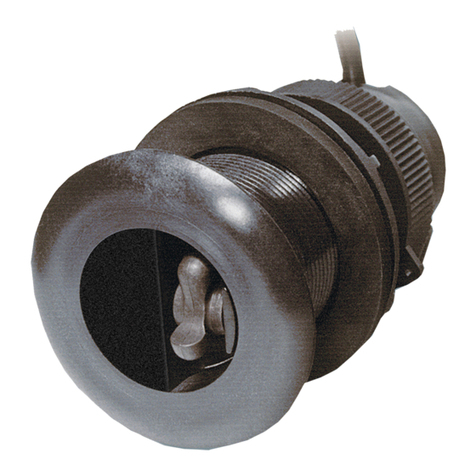
Airmar
Airmar TRIDUCER DST800 owner's guide
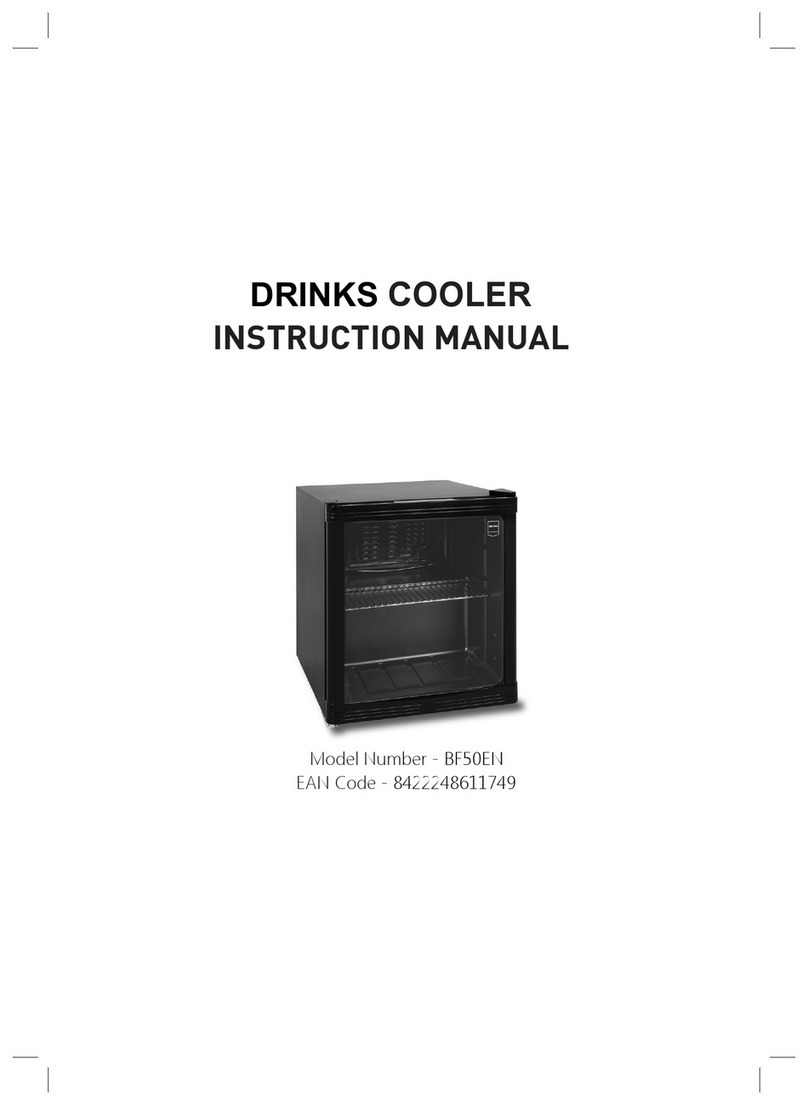
Kingfisher
Kingfisher BF50EN instruction manual
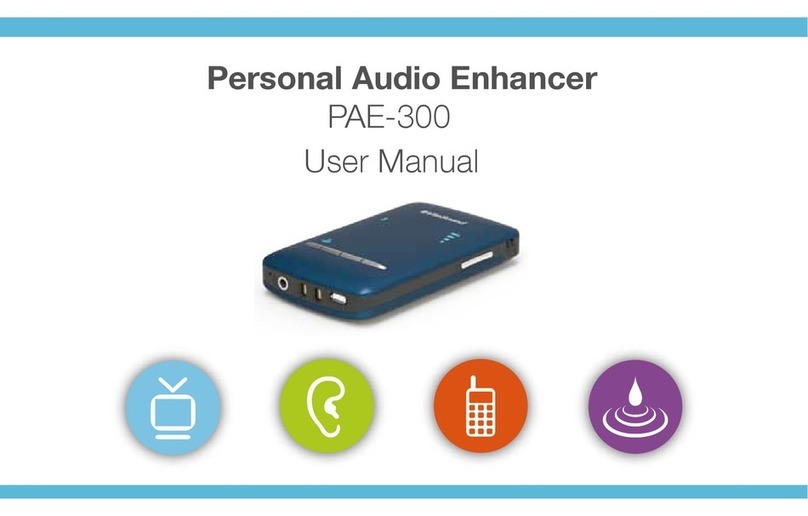
VitaSound Audio
VitaSound Audio PAE-300 user manual
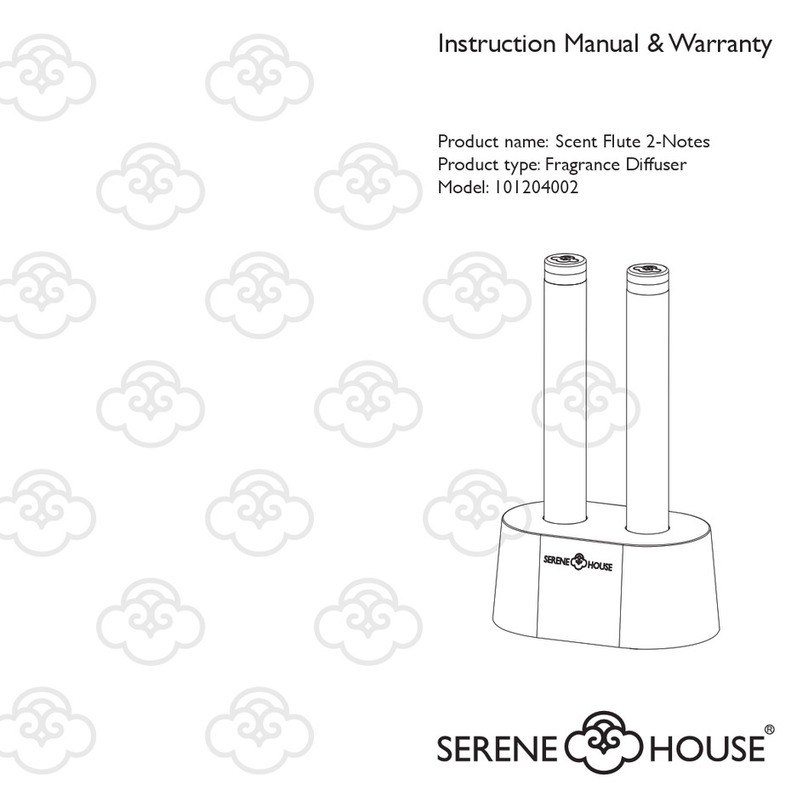
Serene House
Serene House Scent Flute 2-Notes Instruction manual & warranty

IFM Electronic
IFM Electronic Efector 200 installation instructions

